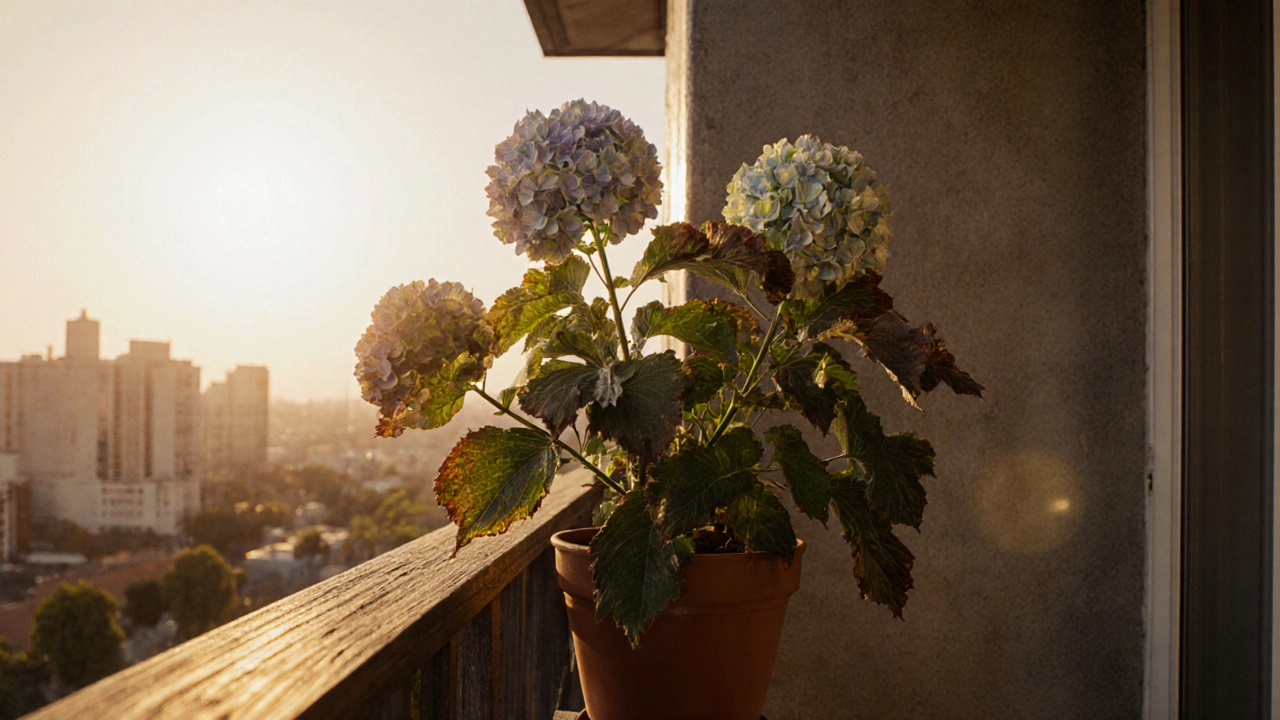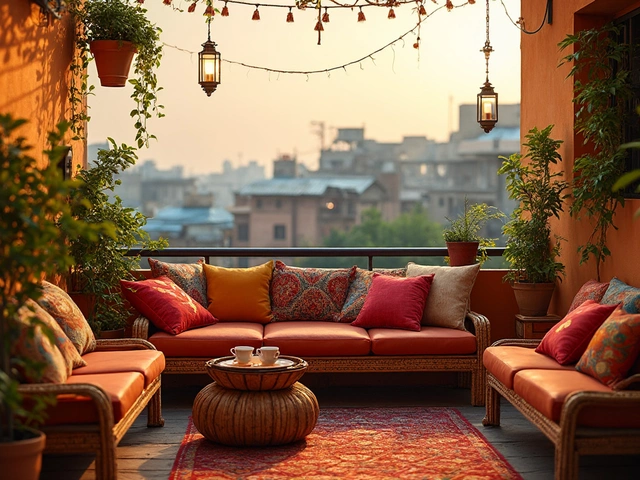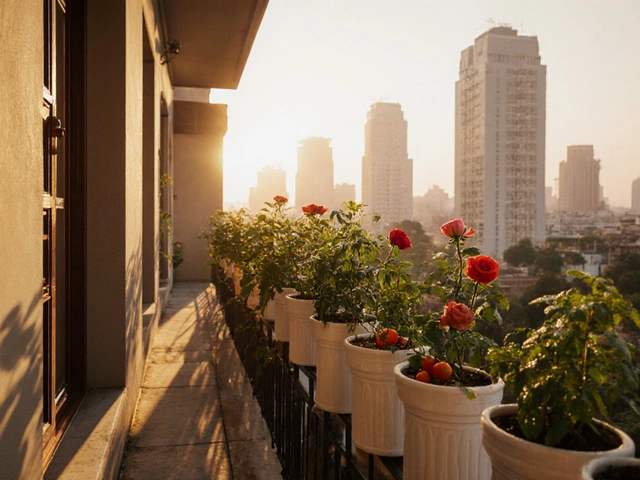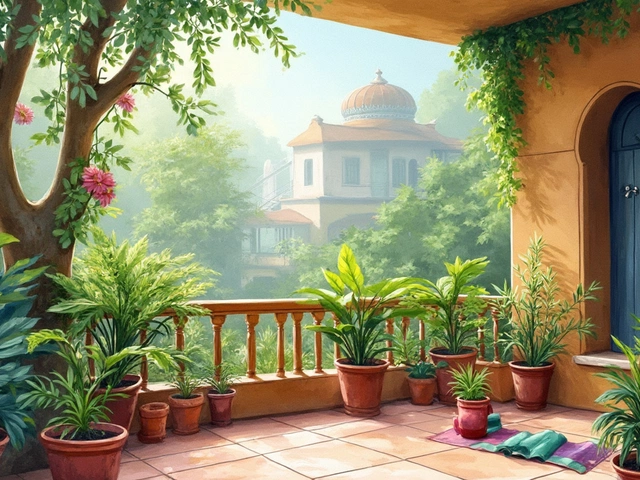Hydrangeas are one of the most popular choices for balcony gardens-lush blooms, big color, and that classic cottage charm. But if you plant them in the wrong spot, you’ll get leggy stems, burnt leaves, and fewer flowers. It’s not about how much you water or what fertilizer you use. It’s about location. Here’s where hydrangeas absolutely should not go on your balcony.
Under direct afternoon sun
Hydrangeas don’t handle hot, harsh sun like a cactus does. If your balcony faces west or gets full sun after 2 p.m., that’s the worst place for them. The leaves curl, turn brown at the edges, and the flowers fade fast-even if you water daily. In 2023, a study from the University of Georgia tracked 120 hydrangea plants on urban balconies. Those in afternoon sun lost 60% more blooms than those in filtered light. Even ‘Endless Summer’ varieties, marketed as sun-tolerant, struggle when temperatures climb above 85°F. They need morning sun only-bright but gentle-followed by shade after noon.
Next to heat-absorbing surfaces
Concrete, brick walls, or metal railings might look nice, but they turn into ovens by midday. Hydrangeas planted right against these surfaces get trapped in a heat pocket. The roots bake, the soil dries out in hours, and the plant goes into shock. I’ve seen people put hydrangeas in pots right next to their building’s south-facing wall. Within two weeks, the leaves were crispy and the blooms dropped. Move the pot at least 12 inches away from any dark, heat-retaining surface. Even a small gap creates airflow and lowers root temperature by 10-15°F.
In deep shade all day
It’s not just too much sun that kills hydrangeas-too little is just as bad. If your balcony is completely blocked by taller buildings or a dense trellis, and the plant gets less than three hours of indirect light daily, it won’t bloom. You’ll get green leaves, sure. But no flowers. Hydrangeas need dappled light-think of it like sunlight filtering through tree branches. A north-facing balcony in the Northern Hemisphere might seem perfect, but if it’s shadowed all day, it’s a no-go. Try placing them where they get light from an open side, or use a mirror to bounce light onto the plant.
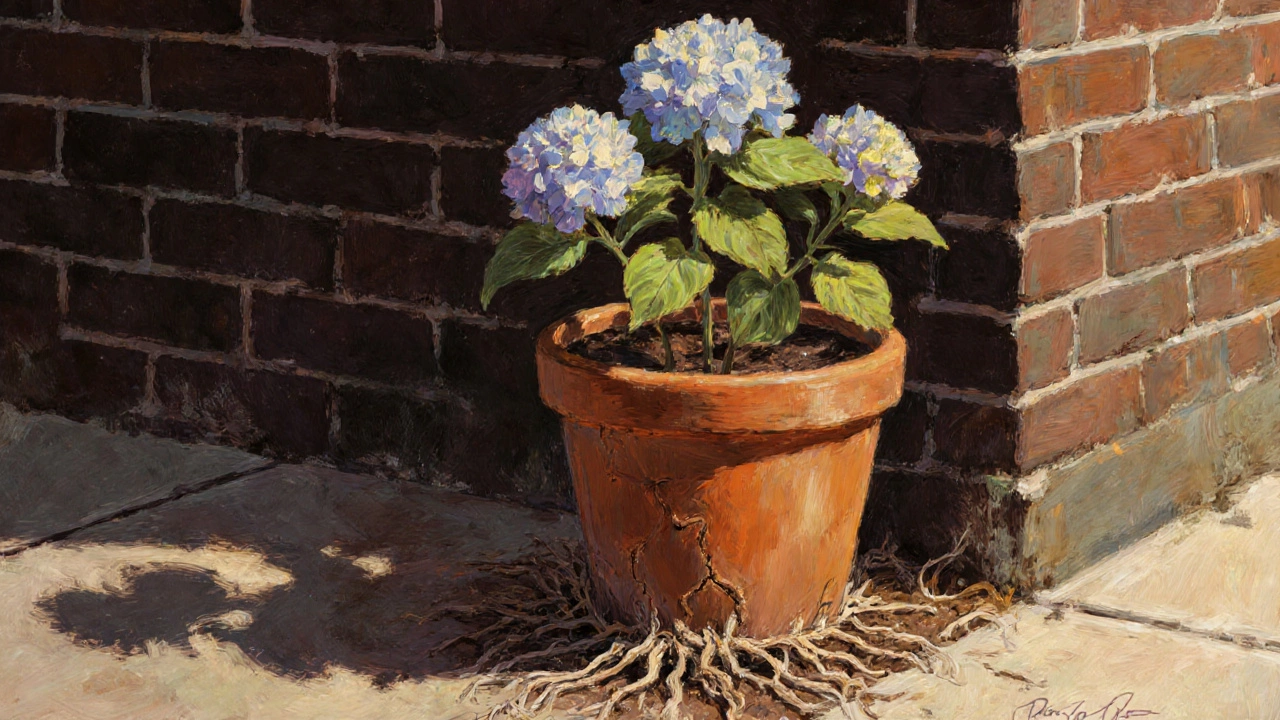
Where water pools or drains poorly
Hydrangeas love moisture, but they hate soggy feet. If your balcony has a slight slope toward one corner, or your pot sits in a saucer that never empties, the roots will rot. I’ve seen people use decorative pots without drainage holes-big mistake. Even if you water sparingly, condensation and rain can accumulate. In 2024, a survey of 300 balcony gardeners found that 42% lost their hydrangeas to root rot within the first season. Always use pots with drainage holes. Elevate them on pot feet or bricks so water runs freely. And never let them sit in standing water for more than 30 minutes after watering.
On windy balconies without protection
Hydrangeas have big, heavy flower heads and thin stems. A strong breeze can snap them like twigs. If your balcony is open on all sides, especially on upper floors, wind is a silent killer. The constant shaking stresses the plant, dries out the leaves, and prevents pollinators from reaching the blooms. Even a light wind can blow away tiny flower buds before they open. Install a lattice screen, a tall potted bamboo, or even a decorative windbreak panel on the windward side. It doesn’t need to be solid-just enough to break the gusts.
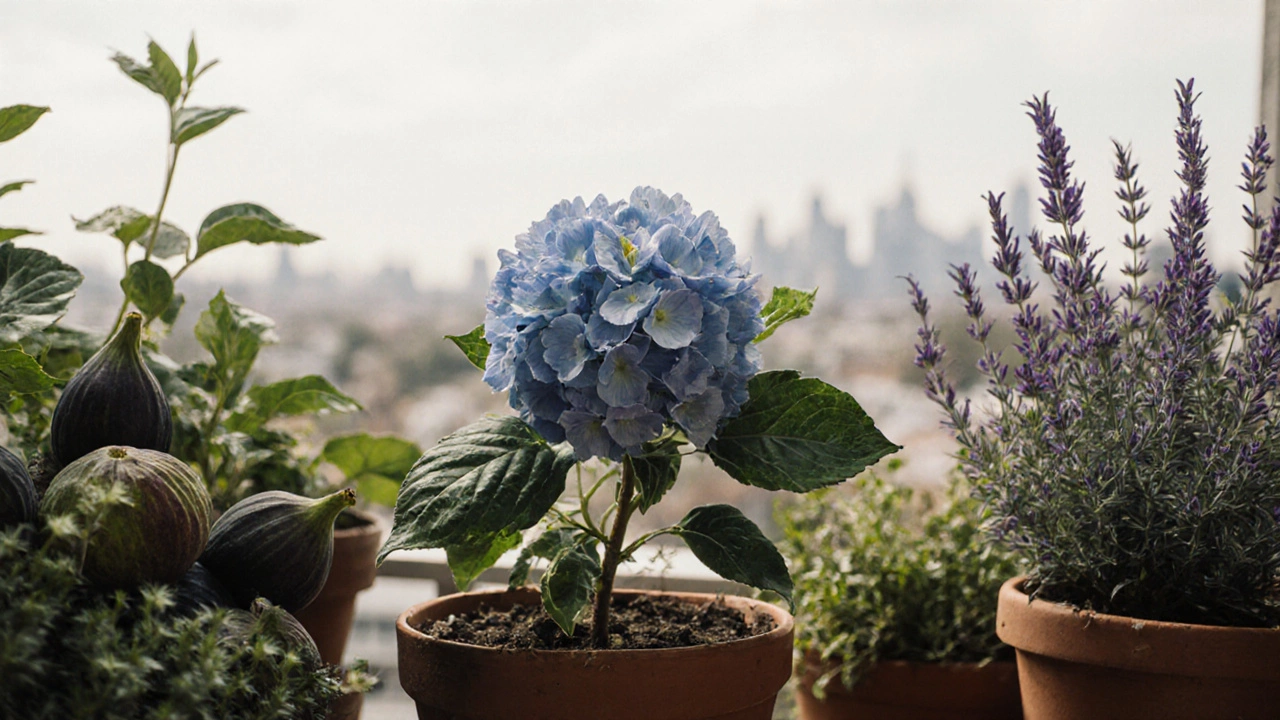
Too close to other large plants
Hydrangeas need room to breathe. If you cram them next to a large fiddle-leaf fig, a tall bamboo, or even a big geranium, they’ll compete for water, nutrients, and light. Their roots spread wide-up to 3 feet-and they don’t like being crowded. I’ve seen hydrangeas planted in the same container as roses or lavender. The roses won. The hydrangea became a pale shadow of itself. Give each hydrangea its own pot, at least 16 inches wide and deep. If planting multiple on one balcony, space them at least 24 inches apart. Let them grow without fighting.
In pots that are too small
Small pots look cute, but hydrangeas are not small plants. A 10-inch pot might work for a seedling for a few months, but by summer, the roots will be tangled and starved. A plant in a tiny pot dries out in one hot day. It can’t store enough water to survive even a brief heatwave. The blooms will be tiny, the leaves yellow. For best results, use pots that are at least 18 inches wide and 16 inches deep. Larger is better-especially if you live in a hot climate. Ceramic or fiberglass pots hold moisture better than plastic, and they’re heavier, so they won’t tip over in wind.
What to do instead
Find a spot that gets morning sun and afternoon shade. Use a large, well-draining pot. Keep it away from walls and wind. Space it from other plants. Water deeply once a day in summer, but only when the top inch of soil feels dry. Mulch with pine bark or coconut coir to keep roots cool. Feed with a slow-release fertilizer in early spring. With the right spot, your hydrangea will reward you with big, bold blooms from June through September-even on a tiny balcony.
